![Crane 620 X 620[1]](/v2/media/ddujc0oh/crane620x6201.png?anchor=center&mode=crop&width=340&height=204&rnd=132974596423030000)
 What is managing contracts in project management?
What is managing contracts in project management?
Definition
A contract is an agreement made between two or more parties that creates legally binding obligations between them.
The contract sets out those obligations and the actions that can be taken if they are not met.
Definition from APM Body of Knowledge 7th edition
Contracts can set expectations between project professionals and suppliers – understanding what contract is being used can prevent issues that hinder project delivery. The relationship between project professionals and contractors must be good, with mutual respect so that projects are successful. Contracts are key in projects and new research in the Dynamic Conditions of Project Success shows that they are conditions that enable project success. Read more about the conditions that improve project outcomes here.
The importance of contracts in project management
Contract management is vital for project managers, and of central importance to most projects. Contracts are covered by contract law. Project managers should always seek specialist advice to ensure that the legal ramifications of any proposed contract are fully understood.
It is the project manager’s responsibility to ensure that certain key principles are followed when selecting and managing contractors and suppliers. For example, using an objective process to select the contractor, avoiding influence of personal preferences; making sure there is understanding of what the contractor wants from the arrangements; and involving the contractor in the project team activities where it’s practical.
Once a contract between project manager and client is agreed and the contract is awarded, project professionals arrange to monitor and manage supplier performance in line with the contract. There are some important controls relevant to all contracts that project professionals should put in place:
-
Understanding the contract obligations
-
Planned meetings to review progress and identify issues
-
Formalised reporting, communication and escalation routes
-
A route to sharing perceptions of risk and putting into place effective responses
Controls that support contract management
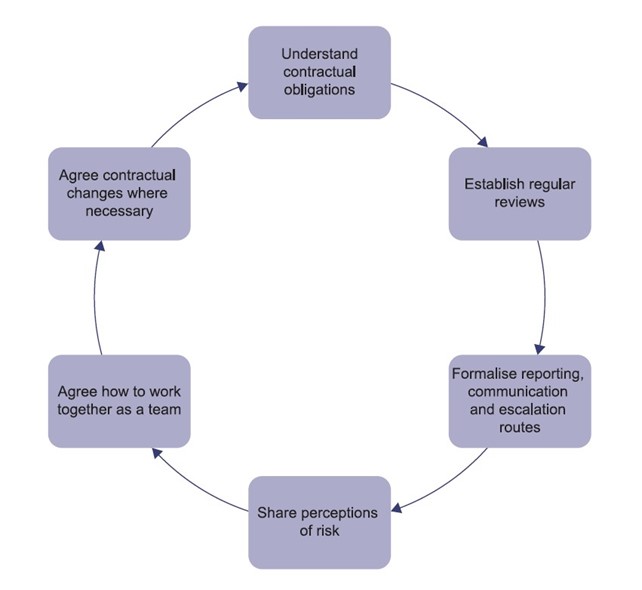
Source: APM Body of Knowledge 7th edition
Various types of contracts in project management:
- The simplest arrangement contractually is a comprehensive contract in which one supplier is responsible for everything required for a project.
- A sequential contract is the use of two or more contractors during a project. For example, in the traditional system for public works, one organisation may be employed to design a project and another organisation to construct it. The second contract in such arrangements can be a comprehensive commitment to supply all the goods and remaining services required to complete the project.
- A parallel contract is where a similar scope of work is given to two or more suppliers and they work in parallel to deliver the complete project. For example, a refurbishment contract for a three-story office block where one contractor does the ground floor, another the first and another the second and so on.
- A sub-contract is a type of contract where the main contractor has a contract, and then sub-contracts it to others to complete.
- Partnering or a joint venture is where large projects are completed by a number of suppliers coming together to form a partnership.
There’s a spectrum to the complexity of contracts; the more experience you gain managing projects, the more you’ll come across contracts and procurement, and the more complex they’ll become.
There is a general trend of moving towards mutually beneficial ‘win–win’ contracts, where risk is shared on a pain/gain share basis. Projects work best when there is collaboration between clients and contractors in the supply chain.
A collaborative relationship with your contractor is more likely to maximise resource usage, achieve project deliverables, and manage costs.
Watch: What is contracts management?
25 Aug - 🕑 52 mins
THE APM PODCAST
Contracts and collaboration in a post-COVID world
Contracts create legally binding obligations between the parties involved in a project. They describe the nature of those obligations and the actions that can be taken if they are not met. As such, the contract is a foundational document whose content will come to define the project and how the work unfolds. It is there to provide certainty and protection to the parties. But in a post-COVID world, there may be an opportunity for contracts to be used to create ongoing collaborative relationships, rather than simply defining strict requirements and being regarded as a tool to give parties leverage in the event of acrimony.
Procuring for agile projects
Agile methodologies developed in the fast-moving IT sector have become popular in the last decade. However, the whole world – not just IT – is moving faster in a more VUCA (volatile, uncertain, complex and ambiguous) environment. Consequently, project delivery
methods are becoming more adaptable and collaborative.

Related reading
![Crane 620 X 620[1]](/v2/media/ddujc0oh/crane620x6201.png?anchor=center&mode=crop&width=340&height=204&rnd=132974596423030000)

![Plane Engine 620 X 620[1]](/v2/media/wjtfet5e/plane-engine620x6201.png?anchor=center&mode=crop&width=340&height=204&rnd=132974596421930000)
![Buildings 3 620 X 620[1]](/v2/media/whlbw1gd/buildings3620x6201.png?anchor=center&mode=crop&width=340&height=204&rnd=132974596424270000)
![Building 620 X 620[1]](/v2/media/xdypwmqv/building620x6201.png?anchor=center&mode=crop&width=340&height=204&rnd=132974596419270000)

Basic Contract Law for Project Managers Part 1
Top 10 ways to protect yourself through the contract
APM Contracts and Procurement Interest Network
The C&P Interest Network exists to promote and disseminate knowledge, understanding and best practice of contracts and procurement in a project environment. It aims to become a lively and constructive debating forum which takes existing best practice and helps make it better.
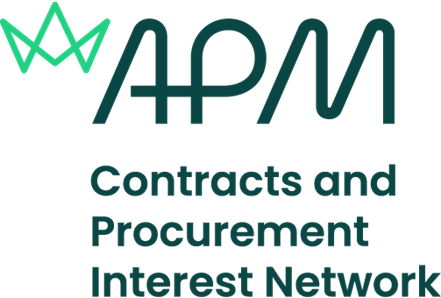
APM Body of Knowledge 7th edition
The APM Body of Knowledge 7th edition is a foundational resource providing the concepts, functions and activities that make up professional project management. It reflects the developing profession, recognising project-based working at all levels, and across all sectors for influencers, decision makers, project professionals and their teams.
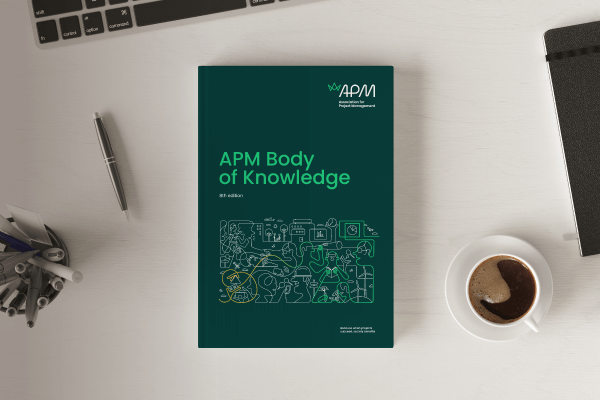
You may also be interested in
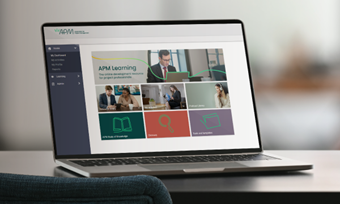
The APM Learning portal is an online resource which provides members with access to digital guides, modules and other digital learning resources as part of the membership benefit.

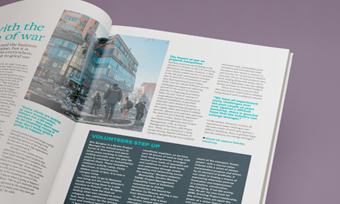
Project – APM's official journal – is circulated quarterly for members only, and online for regularly updated news, blogs, opinions and insights for those in the project community.


